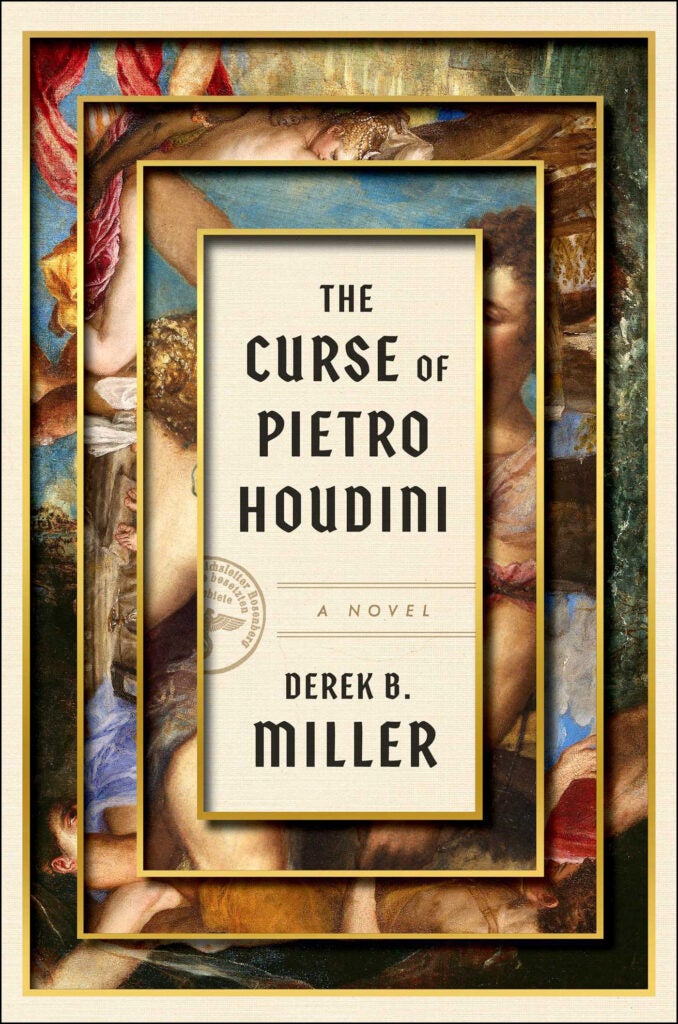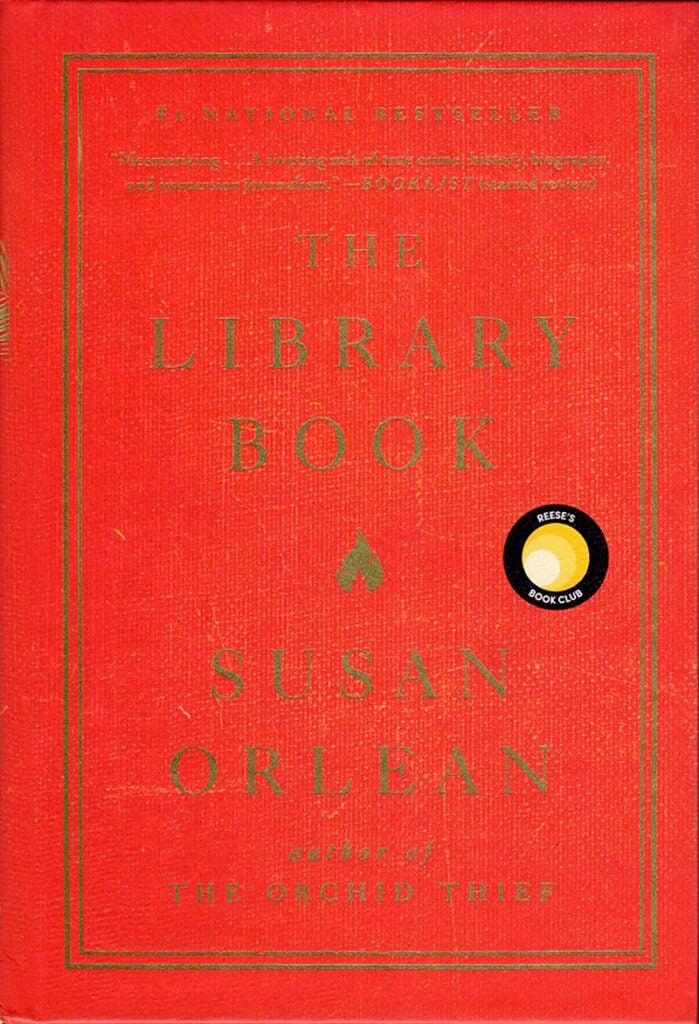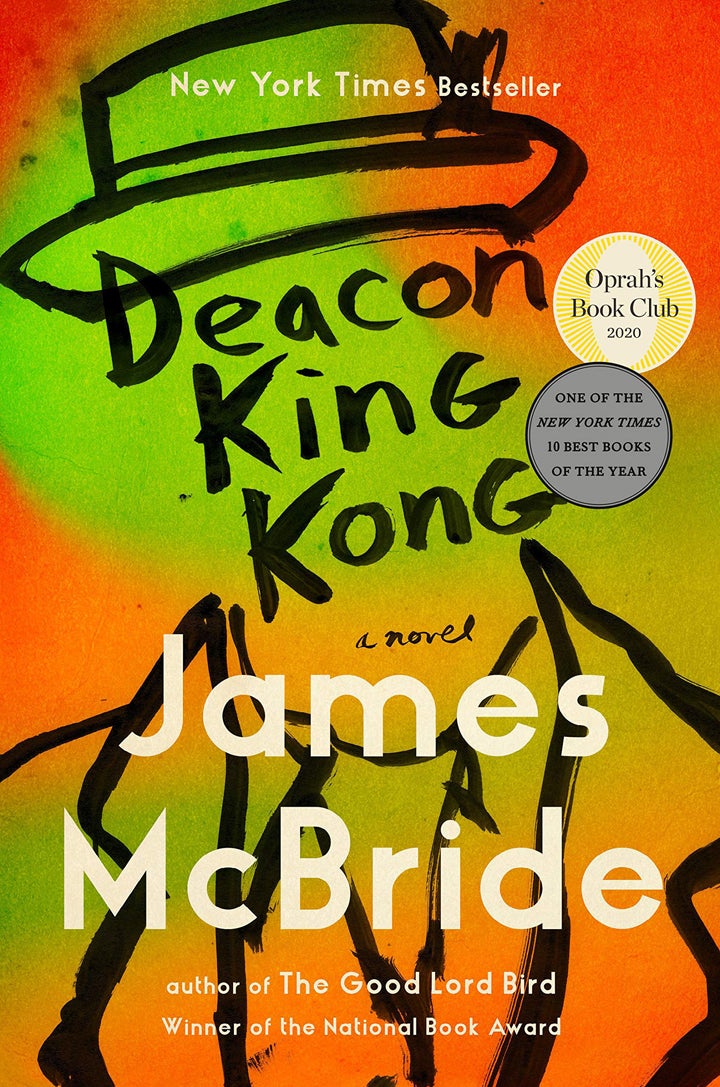
“The Curse of Pietro Houdini” by Derek B. Miller
Derek Miller, a Boston native, has lived in numerous countries, including Israel, Spain and Norway. He also has worked with numerous peace and security centers including a decade of work with the United Nations in Geneva. He describes himself as “a mediocre guitar player, a decent cook, an avid motorcycle rider and an enthusiastic father.” However, writer Richard Russo describes Miller as “dedicated as any writer I know to the proposition that readers should enjoy themselves, should delight in the experience of life and language. If our hearts get broken along the way, so much the better.”
In Miller’s novel set near the end of World War II, the Germans have had the upper hand in Italy, but the allies are about to push forward toward Rome from the south. The village of Cassino lies at the base of the Abbey of Montecassino, founded in 524 by the first Jesuit, Benedict. The allies believe the monks are harboring the Germans. However, the Germans are there to protect the 100,000 pieces of art and medieval manuscripts, by removing them and delivering most to the Pope in Rome.
The local villagers realize they are in imminent danger and seek refuge in the Abbey. Among them is a 14-year-old boy named Massimo, and an elderly man who claims he is Pietro Houdini, an art historian sent by Rome to document the collection in the Abbey. During the war, many people reinvent themselves to hide who they really are or who they have become. This is true of almost every character in Miller’s novel. The orphaned Massimo wants to get to Naples to find relatives that might still be alive. Houdini has his eyes on stealing some of the art from the Germans for his own purpose.
Miller has Houdini treat young Massimo to a quick war-time education in art and survival by answering all the boy’s questions. I have studied a number of languages and was fascinated with Houdini’s description of the most beautiful language in the world — Italian. Houdini says, “If a foreigner speaks even ten words of Italian, we embrace him like a lost relative whose soul has returned to us.”
The allies did actually bomb the Abbey dropping more than 1,400 tons of bombs over numerous days. Massimo and Houdini along with a few others were able to escape beforehand to a village on the other side of the mountain. However, their flight involved lying, cheating, stealing and killing while secreting stolen paintings and gold from the Abbey.
Miller is an engaging storyteller who can weave this wartime tale of harrowing danger, art heists and a coming-of-age story into a historic thriller.
Review by Lizz Taylor, Poor Richard’s Books

“Endangered and Disappearing Birds of Appalachia and the Southeast” by Matt Williams
The University of Kentucky Press has released a new bird guide by award-winning author and photographer Matt Williams. Williams from Crawfordsville, Indiana, is the author of a previous work “Indiana State parks: A Centennial Celebration” and also “Endangered and Disappearing Birds of the Midwest.”
This book contains brilliant photographs of 50 birds whose numbers are declining. Williams includes information about each species with identification tips. There is also a map that shows boundary range during the birds’ breeding season, non-breeding season, pre-migratory and post-migratory seasons.
The Kentucky Warbler is an example of one of the birds detailed by Williams. This bird thrives in the deep woods in shady, brushy understory. In the winter, these birds fly to forested lands in Mexico, Columbia and Venezuela.
The Kentucky Warbler has extensive black on the face and cap with a lemon-yellow body. Because of their preference for dense vegetation, these birds are easier to hear than to see. The song of the male warbler is described as tur-dle, tur-dle, tur-dle.
One peril of the Kentucky Warbler is that it is frequently a victim of the nest parasitism of the Brown headed Cowbird, thus reducing the number of chicks hatched. The larger Cowbird chick pushes the smaller warbler chicks out of the nest before they are ready to fly. This bird is very sensitive to de-forestation and forest fragmentation. The expanding deer population resulting in thinner forest understories has also been suggested as another reason for the bird’s decline.
The Kentucky Warbler is a beautiful specimen and conservationists are highly concerned about its survival. Though the Kentucky Cardinal is our state bird, citizens of Kentucky should support the organizations working to document this species and promote their survival.
When in the woods this spring, listen! “Merlin” is a helpful app for your phone that will identify different bird calls. Hopefully, you might catch a call from the Kentucky Warbler or one of the other endangered species listed in this book. Perhaps, if you hear the bird, that will inspire you to become an activist for its survival.
Review by Lizz Taylor, Poor Richard’s Books

“How Do You Live?” by Genzaburo Yoshino
“How Do You Live?” is a Japanese children’s story that inspired Hayao Miyazaki’s recent movie, “The Boy and the Heron.” Chock-full of digestible life lessons for youth and important reminders for adults, this novel details ordinary happenings of childhood with the utmost care and whimsy.
The story takes place in 1937 Japan as Copper reflects on his daily life, his uncle — taking the place of a father-figure since Copper’s dad’s passing — guides him with advice and wisdom compiled in a journal to give him once he is older. This dual point of view enriches the story as we see Copper endeavor to make sense of his place in the world.
Some days, Copper is simply a boy, and other days, Copper struggles for his identity as a son, student, friend and person. Together with his uncle, he examines the invisible threads that tie us all together in the wild weaving of life.
I found this book to be a reminder that we should maintain our sense of curiosity and wonder throughout adulthood, remaining sensitive to new ideas, different cultures and changing perspectives. “How Do You Live?” offers a reinvigorated look at our humanness and I feel it would be a wonderful book to savor slowly, no matter your age.
Review by Mora Rehm, Paul Sawyier Public Library

“The Library Book” by Susan Orlean
“The Library Book” by Susan Orlean is a fascinating exploration of the Los Angeles Public Library fire intertwined with the author’s journey into the world of libraries. Orlean’s narrative, resembling a gripping novel, delves into the importance of libraries, making it a fitting read for April and Library Week.
As someone who is usually attracted to science-fiction books, such as “The Martian” and mystery thriller authors like Dan Brown, I appreciated Orlean’s skillful storytelling, which seamlessly merged the past and present.
The book not only chronicles the devastating fire but also celebrates the resilience of libraries in our digital age. Orlean skillfully expresses the crucial role libraries play as community hubs, fostering knowledge, connection and cultural preservation. In an era dominated by technology, “The Library Book” serves as a poignant reminder of the enduring relevance and vitality of libraries.
Orlean’s meticulous research and engaging prose elevate the narrative, making it a book that is easy to keep reading for readers with diverse literary preferences. Through this well-crafted exploration, she successfully highlights how libraries continue to shape and enrich our lives, making it a timely and compelling choice for April and a great read for Library Week 2024.
Review by Nick Buchner, Paul Sawyier Public Library










